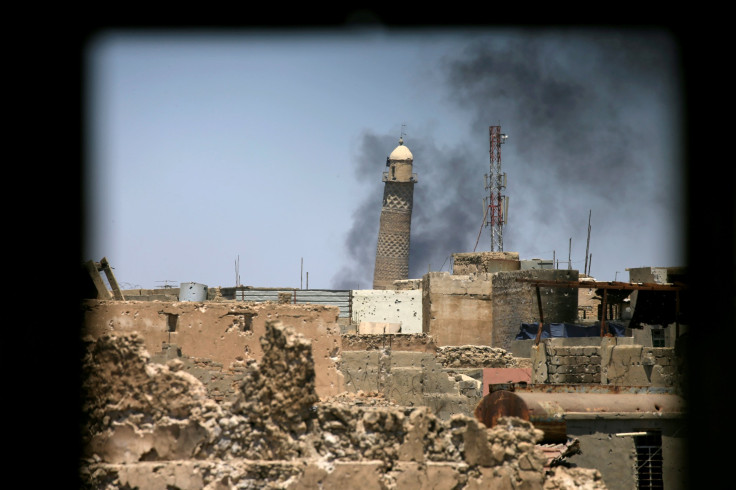Who Bombed Mosul’s Historic Mosque? ISIS Denies Involvement, Blames US For Attack

After the Great Mosque of al-Nuri in Mosul and its famous leaning minaret were blown Wednesday, a blame game started between the Islamic State group (ISIS) and the U.S. blaming each other for the act. While the U.S. and Iraq said that ISIS blew up the historic mosque; the terrorist organization, through its news agency has blamed U.S. warplanes for Mosul's big loss Wednesday, reports said.
U.S. officials told CNN that ISIS' claim was "1,000% false."
"We did not strike in that area," coalition spokesman of the U.S. Air Force, Col. John Dorrian told Reuters by telephone.
Read: ISIS Kills More Than 200 Civilians In Mosul In Past Few Days, According To UN
"The responsibility of this devastation is laid firmly at the doorstep of ISIS," U.S. Army Maj. Gen. Joseph Martin, commander of the coalition's ground component, said in a statement.
The office of Iraqi Prime Minister Haider al-Abadi tweeted saying the ISIS act amounts to "an official announcement of their defeat."
Iraqis would refer to the minaret as "the hunchback". The al-Nuri mosque was named after Nuruddin al‑ Zanki, a noble who fought the early crusaders from a fiefdom that covered territory in modern-day Turkey, Syria and Iraq. It was built in 1172-73, shortly before his death, and also housed an Islamic school, reports said.
By the time renowned medieval traveler and scholar Ibn Battuta visited two centuries later, the minaret had started leaning and the tilt gave the mosque its famous name "hunchback."
Ryan Dillon, the spokesman for Operation Inherent Resolve (OIR) — the U.S.-led coalition against ISIS — tweeted that Iraq War Media Cell announced that ISIS was fully responsible for bombing of the mosque.
Tamer El-Ghobashy, the Middle East Correspondent for Wall Street Journal tweeted a short video of the bombing of the mosque.
Contrary to ISIS claim, this isn't what an airstrike looks like. https://t.co/lDsqJ7asyB
— Tamer El-Ghobashy (@TamerELG) June 21, 2017
In recent days, Iraqi forces have targeted the last remaining areas held by the ISIS in Mosul. "Our forces were advancing toward their targets deep in the Old City and when they got to within 50 meters of the Nuri mosque, Daesh committed another historical crime by blowing up the Nuri mosque," reports said citing the statement of Staff Lt. Gen. Abdulamir Yarallah, the overall commander of the Mosul offensive, late Wednesday.
Read: Islamic State Group In Iraq Hangs Civilian Bodies From Electrical Poles In Mosul Fight
According to Iraq’s joint operations command, the ISIS militants blew up the mosque and its minaret as Iraqi forces — who have been able to squeeze the group into Mosul's historic city center over the last eight months —came within 50 yards of the shrine.
If ISIS conducted the attack, this will not be the first time they would have destroyed a heritage site. The militant group has rampaged through multiple such sites in Iraq and Syria. In March 2015, ISIS fighters destroyed Iraq's ancient Assyrian city of Nimrud. In July 2014, extremists in Mosul destroyed what was believed to be the tomb of Jonah, a key figure in Christianity, Judaism and Islam, among others.
© Copyright IBTimes 2025. All rights reserved.






















